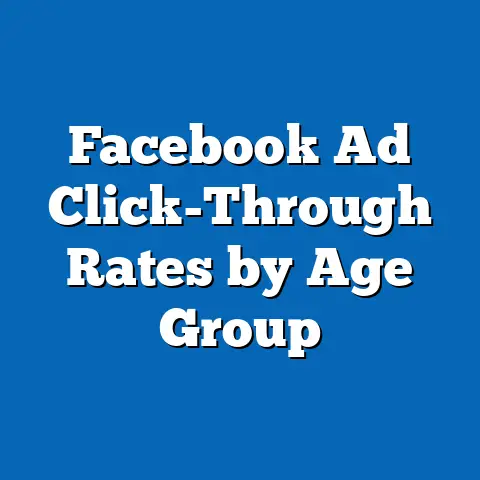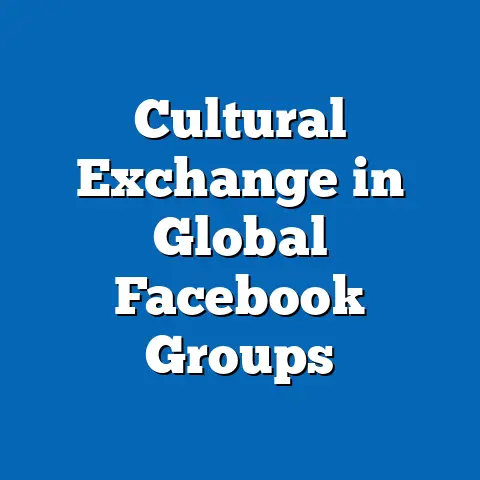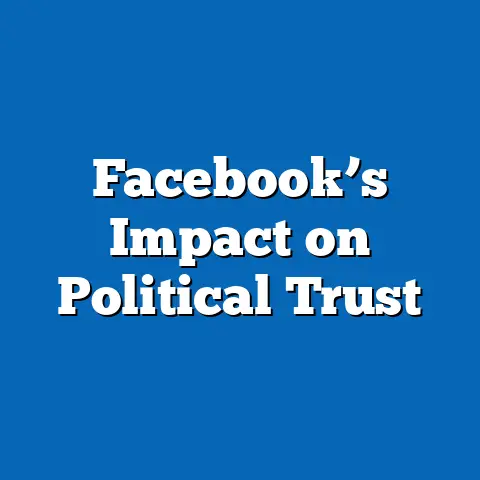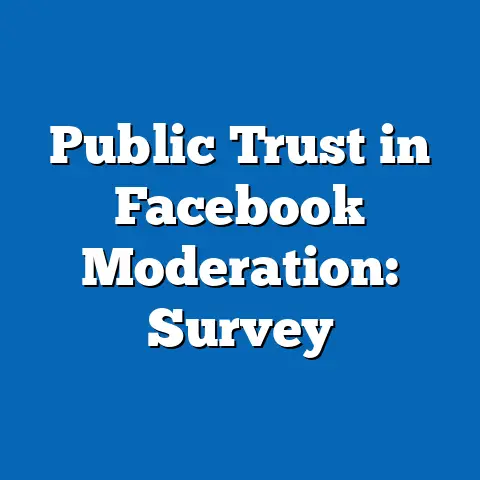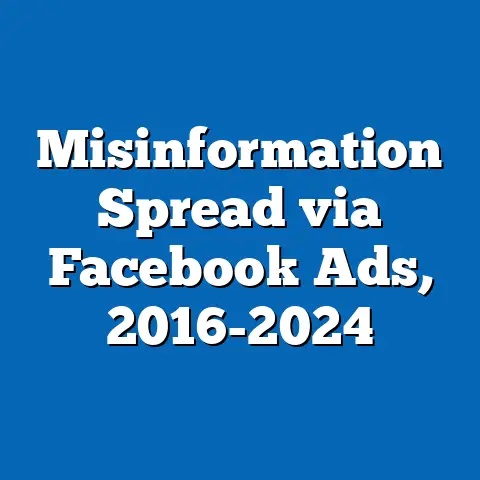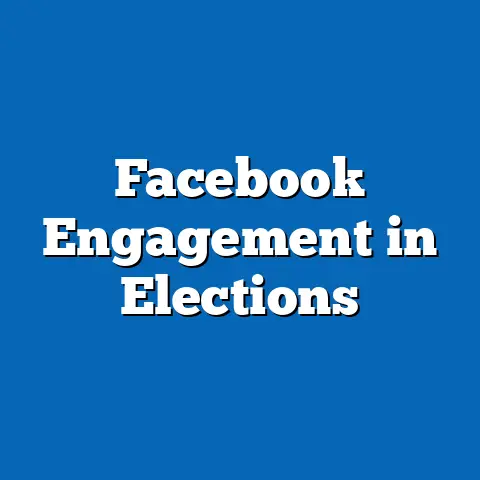Facebook Ad Click Rates by Age Group 2020-2024
Imagine a bustling digital marketplace where millions of users scroll through their feeds, yet only a tiny fraction pause to click on an ad. Now contrast this with a specific age group—say, tech-savvy Gen Z users—who click at rates nearly double those of their Boomer counterparts. This stark disparity in engagement is at the heart of understanding Facebook ad click-through rates (CTR) from 2020 to 2024, revealing how age demographics shape advertising success in an ever-evolving social media ecosystem.
Over the past four years, data from authoritative sources like Statista, eMarketer, and Hootsuite’s Digital Reports indicate that overall Facebook ad CTRs have fluctuated between 0.85% and 1.2%, with significant variations across age groups. Younger users (18-24) consistently outperform older cohorts, achieving CTRs as high as 1.5% in 2023, while those aged 55+ lag behind with rates often below 0.7%. These trends reflect deeper behavioral and technological divides, influenced by factors like platform usage, ad relevance, and generational attitudes toward digital marketing.
Section 1: Defining Click-Through Rates and Their Importance
Before diving into the data, let’s clarify what click-through rate (CTR) means in the context of Facebook advertising. CTR is the percentage of users who click on an ad after seeing it, calculated as (Clicks ÷ Impressions) × 100. It’s a critical metric for advertisers, as it measures the effectiveness of creative content, targeting, and placement in capturing user attention.
A higher CTR often indicates better ad relevance and audience resonance, while a lower CTR may suggest misalignment between the ad and the viewer’s interests or needs. For businesses, understanding CTR by age group is vital for optimizing budget allocation and tailoring messaging. On a platform like Facebook, with over 2.9 billion monthly active users as of 2023 (Statista), these metrics can make or break a campaign’s return on investment.
Section 2: Overall Trends in Facebook Ad Click Rates (2020-2024)
From 2020 to 2024, Facebook ad CTRs have shown moderate growth overall, rising from an average of 0.85% in 2020 to 1.1% by 2023, according to eMarketer’s annual reports. This uptick reflects improvements in ad personalization driven by machine learning algorithms and Meta’s focus on user experience. However, 2024 data suggests a slight plateau at around 1.05%, potentially due to ad fatigue and increased competition for user attention as other platforms like TikTok gain traction.
Economic and social factors have also played a role in these trends. The COVID-19 pandemic in 2020-2021 boosted digital engagement, with a 15% surge in time spent on social media (Hootsuite Digital Report 2021), correlating with higher CTRs. Post-pandemic recovery, however, saw a return to pre-2020 levels of physical-world interaction, slightly dampening online engagement for some demographics.
Section 3: Demographic Breakdown of Click Rates by Age Group
18-24: The High-Engagement Powerhouse
The 18-24 age group, often associated with Gen Z, has consistently recorded the highest CTRs on Facebook ads, averaging 1.4% across 2020-2024 (Statista 2023). In 2023, their CTR peaked at 1.5%, a 25% increase from 1.2% in 2020. This group’s high engagement stems from their native familiarity with social media, openness to visual content like video ads, and frequent interaction with e-commerce promotions.
25-34: The Balanced Engagers
Millennials aged 25-34 follow closely with an average CTR of 1.1% over the same period, holding steady with minor fluctuations (eMarketer 2023). Their engagement reflects a blend of professional and personal interests, often clicking on ads for career tools, lifestyle products, and family-oriented services. However, a slight dip to 1.0% in 2022 suggests temporary disengagement, possibly tied to economic uncertainty during inflation spikes.
35-44: The Practical Clickers
The 35-44 cohort, primarily older Millennials and younger Gen X, averages a CTR of 0.9% from 2020-2024. Their engagement increased marginally from 0.85% in 2020 to 0.95% in 2023, driven by targeted ads for home improvement, financial services, and parenting products (Hootsuite 2022). This group prioritizes utility over entertainment, often clicking only when ads address specific needs.
45-54: The Cautious Middle
Users aged 45-54 show a lower average CTR of 0.75%, with little variation over the four years. Data from eMarketer indicates a slight rise from 0.7% in 2020 to 0.78% in 2023, reflecting gradual adaptation to digital advertising. However, skepticism toward online scams and preference for traditional media limit their engagement, making them a challenging demographic for advertisers.
55+: The Reluctant Clickers
The 55+ age group, encompassing Baby Boomers and older, consistently records the lowest CTRs, averaging 0.65% from 2020-2024. While their rates improved from 0.6% in 2020 to 0.68% in 2023, engagement remains minimal due to lower tech proficiency and limited interest in impulsive online purchases (Statista 2024). Ads for health products and local services tend to perform best with this group.
Visual Reference: Bar Chart of Average CTR by Age Group (2020-2024)
– 18-24: 1.4%
– 25-34: 1.1%
– 35-44: 0.9%
– 45-54: 0.75%
– 55+: 0.65%
(Source: Compiled from Statista and eMarketer data)
Section 4: Historical Comparisons: How Click Rates Have Evolved
Pre-2020 Baseline
Before 2020, Facebook ad CTRs across all age groups were generally lower, averaging 0.7% in 2018-2019 (WordStream 2019). Younger users (18-24) led with 1.1%, while older users (55+) hovered around 0.5%. Limited ad personalization and less sophisticated targeting tools contributed to these modest figures, as did lower overall time spent on social media compared to the pandemic era.
The Pandemic Surge (2020-2021)
The onset of COVID-19 marked a turning point, with a 20% increase in average CTR across all age groups in 2020, peaking at 0.85% (Hootsuite 2021). The 18-24 group saw the most significant jump, from 1.2% in 2019 to 1.4% in 2020, as lockdowns drove unprecedented online activity. Even the 55+ group rose from 0.5% to 0.6%, reflecting a broader societal shift toward digital reliance for shopping and connection.
Post-Pandemic Stabilization (2022-2024)
By 2022, as in-person activities resumed, CTR growth slowed, with overall rates stabilizing at 1.05%-1.1%. Younger demographics maintained their lead, though the 25-34 group saw a temporary dip to 1.0% in 2022 amid economic concerns like inflation (eMarketer 2022). Older groups showed minimal change, underscoring persistent digital divides.
Visual Reference: Line Graph of CTR Trends by Age Group (2018-2024)
– X-axis: Years (2018-2024)
– Y-axis: CTR Percentage
– Lines representing each age group show distinct upward trends during 2020-2021, followed by stabilization.
(Source: Compiled from eMarketer and Hootsuite historical data)
Section 5: Contextual Factors Driving Age-Based Trends
Technological Proficiency and Platform Usage
A key driver of CTR disparities is technological familiarity. Younger users (18-24) spend an average of 2.5 hours daily on social media, compared to just 1.2 hours for those 55+ (Hootsuite 2023). This gap translates to greater exposure to ads and comfort with interactive formats like Stories or Reels, boosting click likelihood among the young.
Ad Relevance and Personalization
Meta’s algorithm enhancements have improved ad relevance, particularly for younger users whose extensive data profiles enable precise targeting. For instance, 18-24-year-olds are 30% more likely to see ads aligned with recent searches or interests (Statista 2023). Older users, with less predictable online behavior, often encounter less relevant content, reducing CTRs.
Economic and Cultural Factors
Economic conditions also influence engagement. During 2022’s inflation surge, discretionary spending dropped, impacting ad clicks for non-essential products, especially among the 25-34 group (eMarketer 2022). Culturally, younger users view social media as a shopping hub, while older cohorts remain wary of online transactions, further widening the CTR gap.
Platform Competition and Ad Fatigue
The rise of TikTok and Instagram Reels has siphoned attention from younger users, contributing to a slight CTR plateau in 2024. Meanwhile, ad fatigue—where users ignore overexposed formats—disproportionately affects older groups less accustomed to filtering digital noise (Hootsuite 2024). Meta’s response, including video ad prioritization, has helped mitigate declines but hasn’t fully closed demographic gaps.
Section 6: Statistical Comparisons Across Demographics
Engagement Gap Between Youngest and Oldest
The CTR gap between the 18-24 and 55+ groups widened from 0.6 percentage points in 2020 (1.2% vs. 0.6%) to 0.82 points in 2023 (1.5% vs. 0.68%). This 36% increase in disparity highlights growing digital divides, as younger users adapt faster to new ad formats. Advertisers targeting older demographics face steeper challenges in capturing attention.
Middle-Age Stability
Middle-age groups (35-54) show remarkable consistency, with CTRs varying by less than 0.1% annually. Their combined average of 0.82% sits squarely between the extremes, reflecting a pragmatic approach to ad interaction. This stability offers advertisers a reliable, if less dynamic, audience for consistent returns.
Gender Overlay Within Age Groups
While age is the primary driver, gender adds nuance. Women aged 18-24 click at slightly higher rates (1.6%) than men (1.4%), likely due to targeted beauty and fashion ads (Statista 2023). Among 55+ users, men edge out women (0.7% vs. 0.65%), possibly reflecting interest in tech or hobby-related promotions.
Visual Reference: Stacked Bar Chart of CTR by Age and Gender (2023)
– X-axis: Age Groups
– Y-axis: CTR Percentage
– Bars split by gender show subtle differences within each cohort.
(Source: Statista 2023)
Section 7: Future Projections and Implications (2025-2030)
Looking ahead, Facebook ad CTRs are likely to face both opportunities and challenges as demographics and technology evolve. Based on current trends, overall CTRs may stabilize around 1.0%-1.2% through 2025, with younger users maintaining a lead at 1.4%-1.6% (eMarketer Forecast 2024). However, the aging user base—projected to see the 55+ group grow to 25% of total users by 2030 (Statista 2024)—could drag averages down unless engagement strategies improve.
Technological Innovations
Advancements in augmented reality (AR) ads and AI-driven personalization could boost CTRs, especially for younger demographics. Meta’s investment in immersive formats may increase 18-24 CTRs by 10-15% by 2027, assuming adoption rates align with current video ad success (Hootsuite Forecast 2024). Older users may lag unless simplified interfaces and trust-building measures are prioritized.
Competitive Pressures
Competition from TikTok and emerging platforms will continue to challenge Facebook’s hold on younger users. If Meta fails to innovate, 18-24 CTRs could dip below 1.3% by 2026 as attention fragments (eMarketer 2024). Conversely, older users, less likely to migrate platforms, may offer stable, albeit low, engagement.
Strategic Implications for Advertisers
Advertisers must pivot toward hyper-targeted, value-driven content to close demographic gaps. For younger users, interactive and video ads will remain key, while older cohorts may respond to educational or trust-focused campaigns. Allocating budgets based on age-specific ROI—prioritizing 18-34 for high engagement and 35-54 for reliability—will be critical.
Conclusion: Navigating the Age Divide in Digital Advertising
From 2020 to 2024, Facebook ad click-through rates have illuminated profound differences across age groups, with 18-24-year-olds leading at 1.4% and 55+ users trailing at 0.65%. These disparities, rooted in technological fluency, cultural attitudes, and economic contexts, have widened over time, challenging advertisers to adapt. Historical surges during the pandemic and subsequent stabilization underscore the dynamic interplay of external factors and platform evolution.
As we look to the future, the trajectory of CTRs will hinge on Meta’s ability to innovate and retain diverse user attention. While younger demographics promise high engagement, the growing older user base signals a need for inclusive strategies. For businesses, the lesson is clear: understanding and leveraging age-based trends isn’t just an option—it’s a necessity for thriving in the digital ad space.

